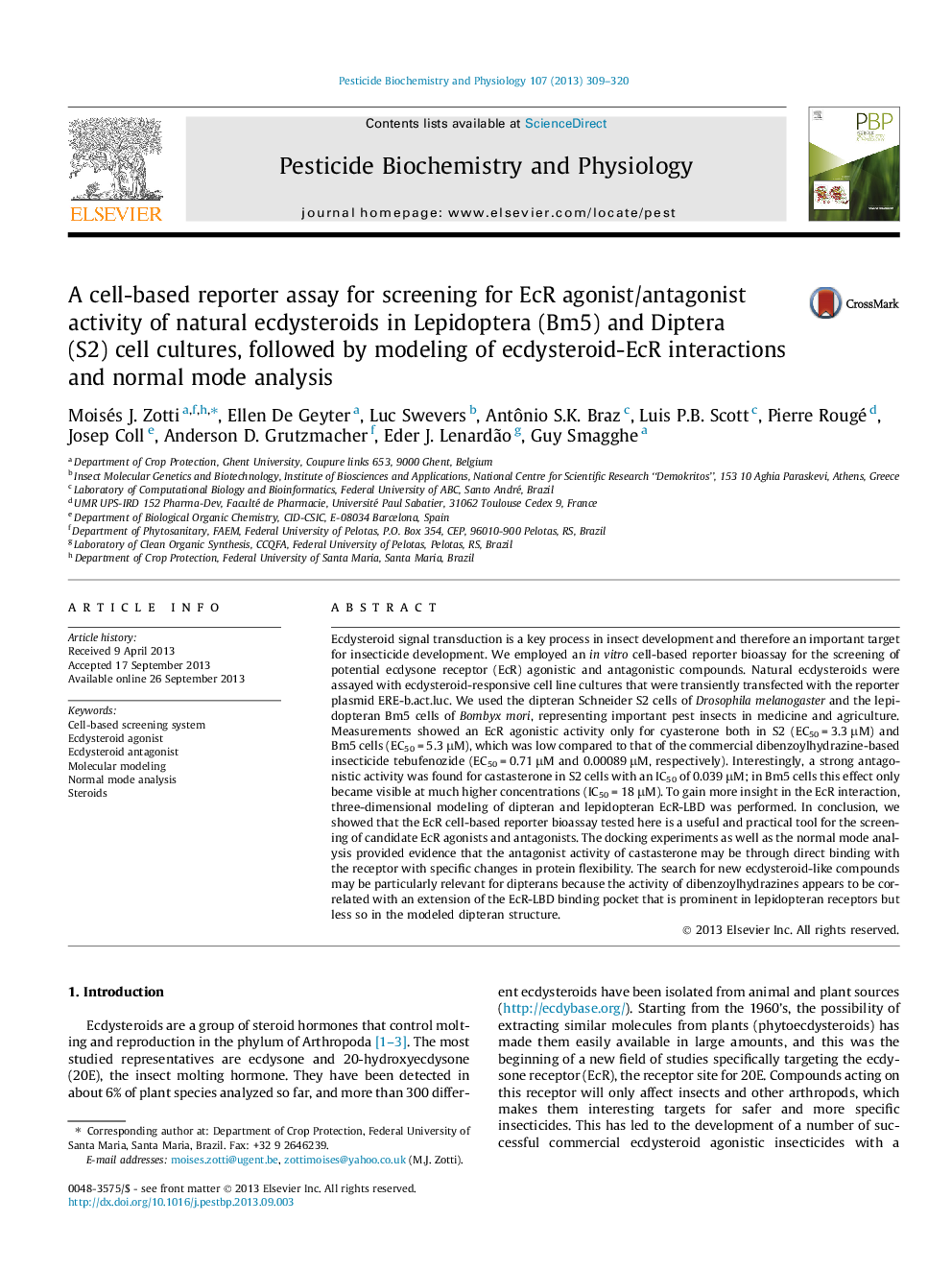| Article ID | Journal | Published Year | Pages | File Type |
|---|---|---|---|---|
| 2009332 | Pesticide Biochemistry and Physiology | 2013 | 12 Pages |
•Cell-based reporter assays for natural ecdysteroids.•Castasterone antagonistic activity suggests specificity against Diptera.•Normal mode analysis was applied to study protein flexibility.•Castasterone restricts the ECR/USP flexibility in specific regions.
Ecdysteroid signal transduction is a key process in insect development and therefore an important target for insecticide development. We employed an in vitro cell-based reporter bioassay for the screening of potential ecdysone receptor (EcR) agonistic and antagonistic compounds. Natural ecdysteroids were assayed with ecdysteroid-responsive cell line cultures that were transiently transfected with the reporter plasmid ERE-b.act.luc. We used the dipteran Schneider S2 cells of Drosophila melanogaster and the lepidopteran Bm5 cells of Bombyx mori, representing important pest insects in medicine and agriculture. Measurements showed an EcR agonistic activity only for cyasterone both in S2 (EC50 = 3.3 μM) and Bm5 cells (EC50 = 5.3 μM), which was low compared to that of the commercial dibenzoylhydrazine-based insecticide tebufenozide (EC50 = 0.71 μM and 0.00089 μM, respectively). Interestingly, a strong antagonistic activity was found for castasterone in S2 cells with an IC50 of 0.039 μM; in Bm5 cells this effect only became visible at much higher concentrations (IC50 = 18 μM). To gain more insight in the EcR interaction, three-dimensional modeling of dipteran and lepidopteran EcR-LBD was performed. In conclusion, we showed that the EcR cell-based reporter bioassay tested here is a useful and practical tool for the screening of candidate EcR agonists and antagonists. The docking experiments as well as the normal mode analysis provided evidence that the antagonist activity of castasterone may be through direct binding with the receptor with specific changes in protein flexibility. The search for new ecdysteroid-like compounds may be particularly relevant for dipterans because the activity of dibenzoylhydrazines appears to be correlated with an extension of the EcR-LBD binding pocket that is prominent in lepidopteran receptors but less so in the modeled dipteran structure.
Graphical abstractFigure optionsDownload full-size imageDownload as PowerPoint slide
